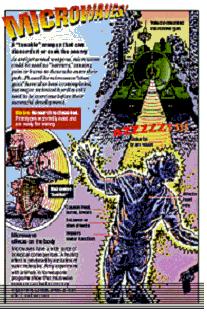The non-lethal weapons, which use high-powered electromagnetic beams, will be fitted to vehicles already in Iraq, which will allow the system to be introduced as early as next year.

| Microwave weapons that
cause pain without lasting injury are to be
issued to American troops in Iraq for the first time as concern mounts
over the growing number of civilians killed in fighting. The non-lethal weapons, which use high-powered electromagnetic beams, will be fitted to vehicles already in Iraq, which will allow the system to be introduced as early as next year. |
 |